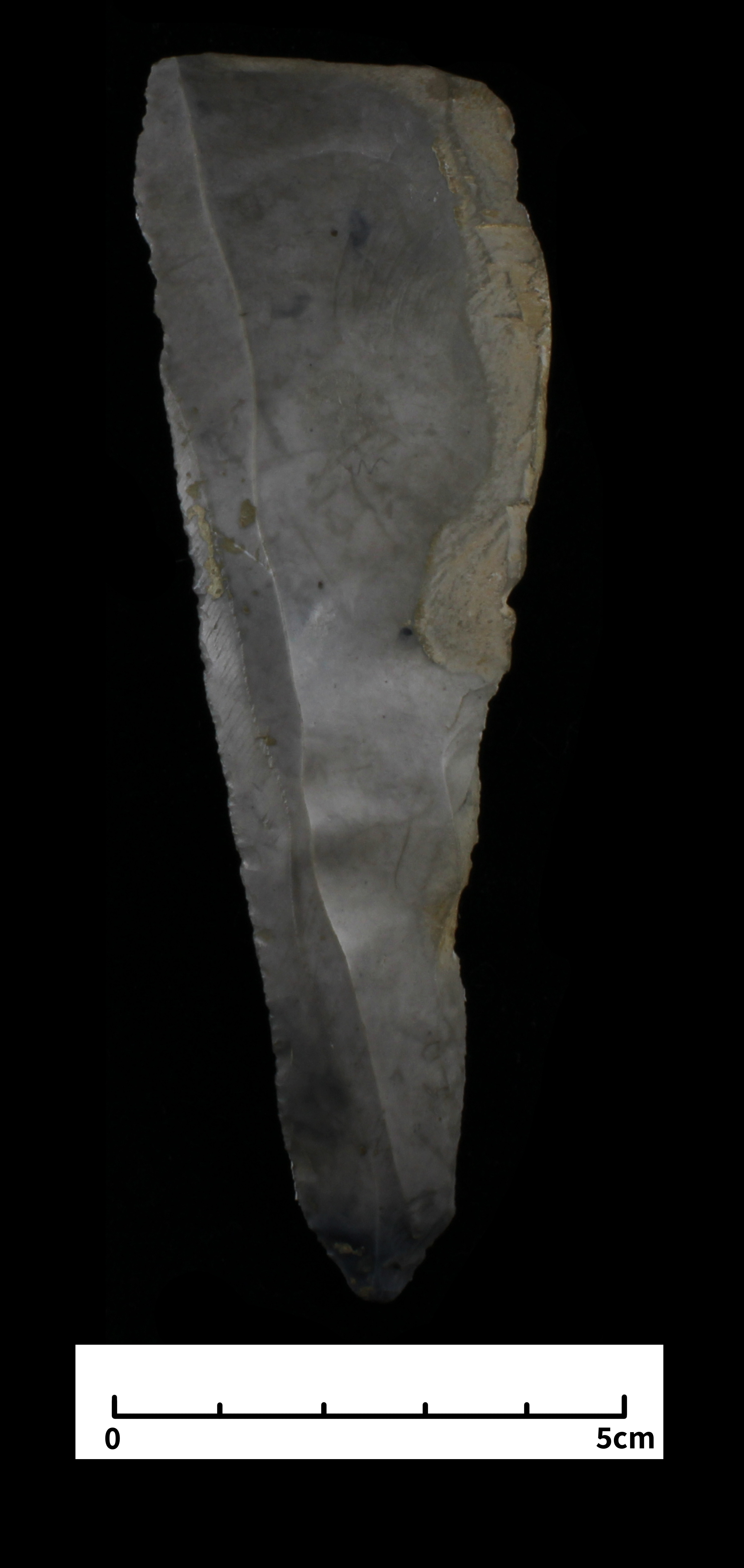Kostenki 17 blade
Flint blade, 41,000 years old
Kostënki 17 is among the most important archaeological sites for understanding the very first modern humans in Eastern Europe. Primarily excavated by P.I. Boriskovskii in 1953 and 1955, the site’s lower layer contained a rich archaeological assemblage of worked flint and bone, pendants and animal bones.
The stone-working at the site shows that many large blades such as this one were produced. Some of these blades were then used as tools (e.g. scrapers), but most often they were transformed into cores for the production of smaller bladelets.
(Artefact housed at the Institute for the History of Material Culture [Palaeolithic Division], Saint Petersburg.)








